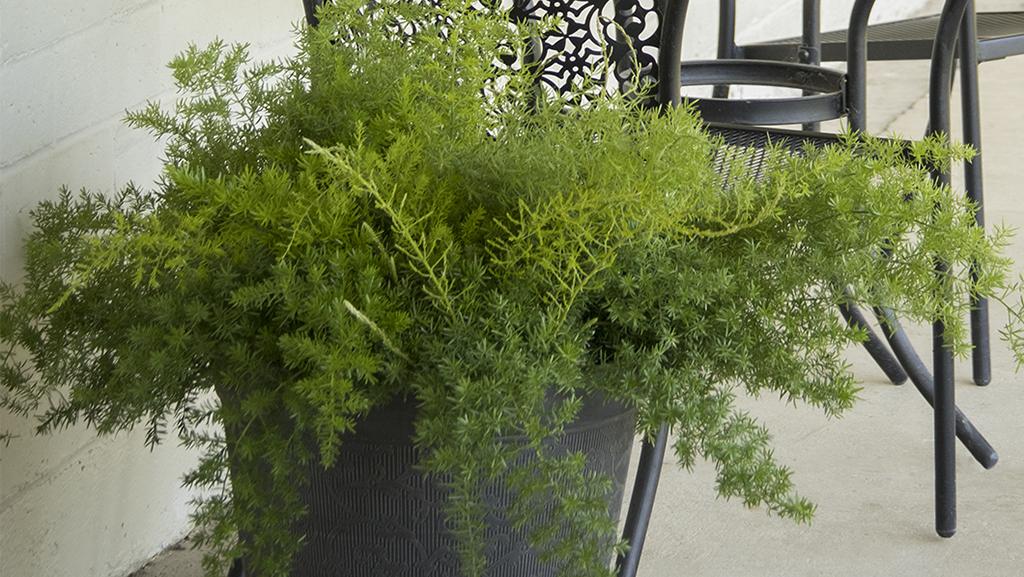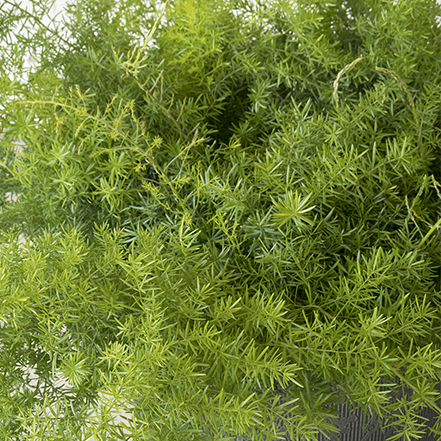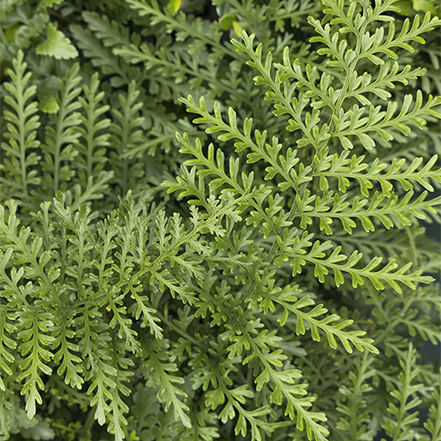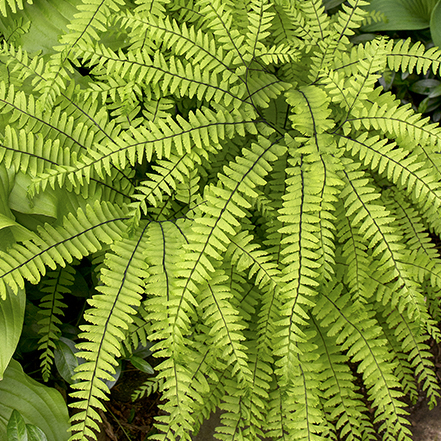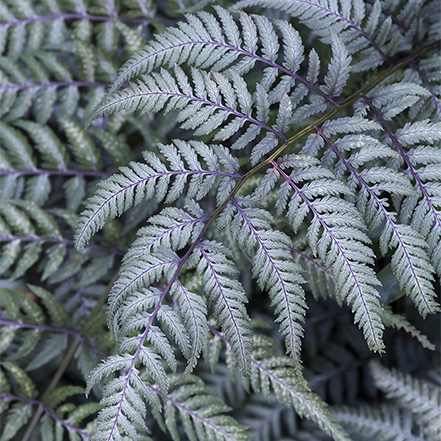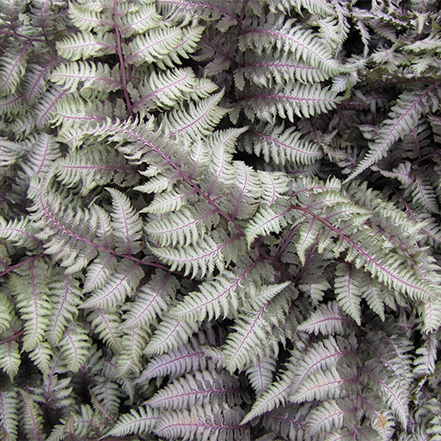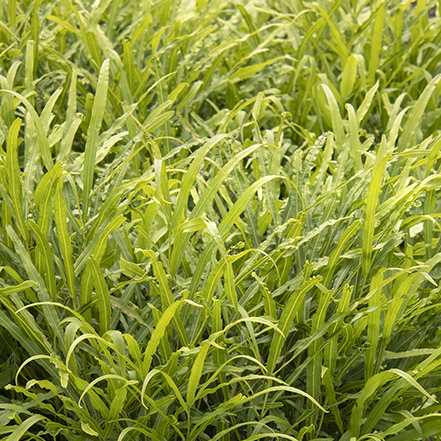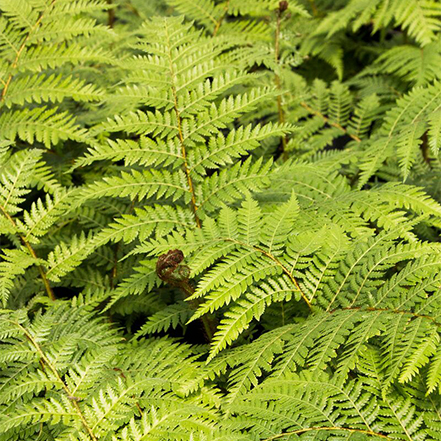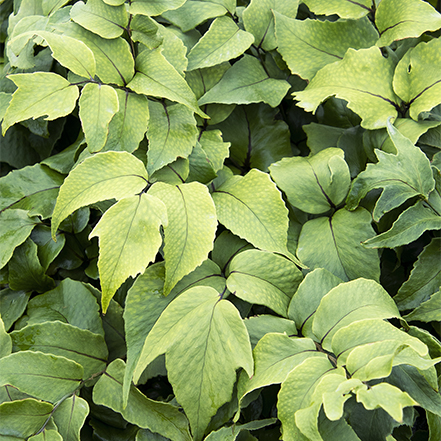Wondering if you can grow your favorite ferns indoors? In most cases, the answer is yes! Add a green feeling of abundance to your interior spaces with a few lush, green plants like ferns. Many ferns make wonderful, low-maintenance houseplants, as long as you provide the right amounts of light and moisture. Here are eight favorites to get you started. Plus, we've added tips for growing ferns indoors at the bottom to make sure you're growing confidently.
Show us your gorgeous indoor ferns by tagging us (@MonroviaPlants) on social media. Want more expert growing tips, plant information, in-depth design and plant guides, and first access to live, interactive webinars? Sign up for our newsletter!
8 Favorite Ferns to Grow Indoors
1.
Compact Sprenger Asparagus Fern
Also pictured above in an outdoor container, Sprenger Asparagus Fern is a great starter fern. Provide humidity by placing it on a store-bought or homemade pebble tray. Make your own pebble tray by filling a bowl or tray with pebbles or small rocks. Then filling it with water, then place your plant on top. Mist this fern a few times a week for added moisture. Compact, it forms a nice, tidy shape that looks great planted in a basket. Then hung in a sunny, but not hot, window. Zones 9-11.
2.
Austral Gem Bird’s Nest Fern
A newer, improved variety. Stately and handsome, this sterile variety does not develop messy spores making an ideal houseplant. Unlike some ferns, Austral Gem is highly adaptable to low humidity. Zones 9–11.
3.
American Maidenhair Fern
A cold-hardy fern known for its outdoor appeal, the American Maidenhair fern is also a rewarding fern to grow indoors. It can be a bit of a diva if not kept constantly moist, but not soggy. Mist often and mulch to help the soil retain moisture. Set a few feet from a southern or eastern-facing window; turn weekly to ensure even light. Yes, it’s worth it. Zones 3–8.
4.
Japanese Painted Fern
Short, spreading habit looks great planted in a low trough set in a bright, but not hot, and sunny window. Silvery-blue fronds add a bit of light to indoor plantings. Like it’s red-hued cousin, a bit of a challenge, but offers a big wow, too. Keep soil evenly moist. Zones 5–8.
5.
Regal Red Japanese Painted Fern
Woodland ferns can be a bit more of a challenge indoors. However their striking colors make them worthy of the work. Provide ample humidity, keep soil evenly moist, and place in a bright but not hot, sunny window. Zones 4–9.
6.
Jurassic™ Velociraptor Ribbon Fern
A lush fern that will fill a container with finely textured foliage. Velociraptor is perfect for containers and thrives in a bright window out of direct sunlight. Keep the soil evenly moist and do not allow it to dry out. Zones 7-9.
7.
Australian Tree Fern
Finely cut, broad, and bright-green fronds form a graceful canopy atop a slender trunk. Giving the Australian Tree Fern an exotic look reminiscent of tropical climes. The perfect indoor specimen plant, it can grow quite tall in a large container. Grow in bright, indirect light and keep the soil evenly moist. Zones 10-11.
8.
Jurassic™ Stegosaurus Holly Fern
Looking for a rare indoor plant from a far-away place? You've found it! Stegosaurus is grown from spore that plantsman Dan Hinkley collected in the Hubei Provence of China at 6,000 feet. Stiff, dark-green, shiny holly-like fronds of large leaflets provide height to indoor plant groupings. It likes bright, indirect light and can handle colder, drier air than most ferns. Grow in well-draining, lightweight potting soil. Zones 6-9.
How to Grow Ferns Indoors
Most ferns require high levels of humidity to grow green and lush indoors. This can be a challenge. Especially in areas where heat is provided by a furnace, which can dry out the indoor air. Keep ferns away from radiators, bright, hot, sunny windows, and use a pebble tray (right) to add moisture. Even after all of that, your ferns still might look unhappy. If so, consider moving them to a regularly-used bathroom with a shower or into a terrarium or Wardian case. Moved potted plants outside as soon as weather permits.
Other essentials:
Light: Indirect is best such as that provided by a south or east-facing window.
Water: Wait until the potting mix just starts to dry out. Then water deeply and thoroughly, making sure water drains well.
Temperature: On the cool side (about 70 degrees) and away from drafts.
Food: Generally, feed weekly with a liquid fertilizer that’s diluted to one-half strength (known as “feeding weekly, weakly”).
T.L.C: Occasionally misting the plant or taking it into a warm shower will help keep it clean.
Fascinated by ferns? Here are 5 easy ways to use them. String garden, anyone?

Placing potted ferns on top of pebbles in a tray filled with a few inches of water. This helps to create the humidity to thrive indoors.
